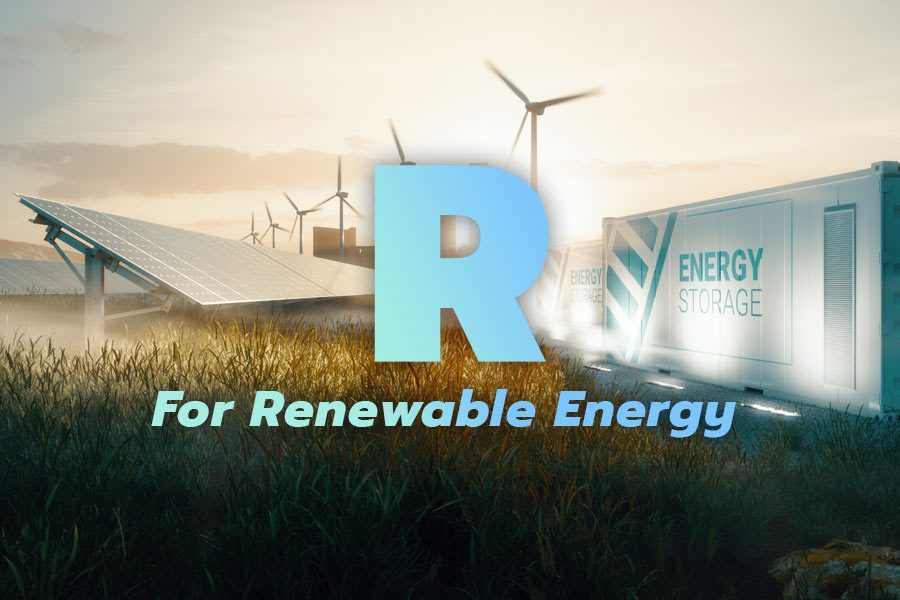Hydrogen A to Z Series: R For Renewable Energy
By: GenH2 Staff
Read Time: 4 minutes
Defining The Hydrogen Economy from A to Z: R is for Renewable Energy
Continuing in our defining the Hydrogen economy from A-to-Z series, we are focusing on the letter R and discussing Renewable Energy.
Renewable energy is a “collection” of energy from natural sources that are replenished at a higher rate than they are consumed. It is a subject that is at the forefront of discussions on climate change in the United States and around the world. In fact, the largest economies in the world have pledged for green initiatives and renewable energy solutions are a big part of these initiatives.
Renewable energy sources such as sunlight or solar, wind and hydropower are plentiful and all around us. Renewable energy is green because the generation or collection of energy from infinite sources does not produce carbon emissions or negatively impact the environment. Let us take a look at some of the most popular renewable energy sources currently used today.
Solar Energy
Solar energy is one of the most effective sources of renewable energy because sunlight is one of our planet’s most abundant and freely available energy resources. Solar power is energy from the sun that is converted into thermal or electrical energy. In a single hour, the amount of power from the sun that strikes the Earth is more than the entire world consumes in a year. The total incoming solar energy, or rate of heat flow from the Sun onto the Earth’s surface, is approximately 174,000,000 billion joules per second (or watts).
Advancements in solar and storage technologies will continue to harness this source in better, easier and cheaper ways, making solar the fastest growing renewable energy source.
Wind Energy
Wind energy offers many advantages, which explains why it’s the second fastest-growing energy source in the world. Wind is used to produce electricity by using the kinetic energy created by air in motion and transforming it into electrical energy using wind turbines or wind energy conversion systems. According to the International Renewable Energy Agency, (IRENA), global installed wind-generation capacity onshore and offshore has increased by a factor of almost 75 in the past two decades, jumping from 7.5 gigawatts (GW) in 1997 to some 564 GW by 2018.
Hydro Energy
Hydro energy derived from flowing water. By building a dam or barrier, a large reservoir can be used to create a controlled flow of water that will drive a turbine, similar to how wind energy is harnessed. This energy source can often be more reliable than solar or wind power and allows electricity to be stored for use when demand reaches a peak. It is among the most cost-effective means of generating electricity and is often the preferred method where available.
Now that we have discussed these different types of renewable energy sources that enable the reduction of carbon emissions, we want to focus on the main problem on how to implement the use of that renewable energy for the clean energy world future. The main problem is the storage of all this renewable energy that is not being collected every day. The energy itself is plentiful but a way to capture that energy and store it and use it later or move it around and use it where needed, is the challenge.
Renewable energy is now being used to produce hydrogen gas from water by electrolysis. This hydrogen gas can be put into pipelines or into salt caverns when those are practical possibilities. But in general, for the world at large, for practically anywhere and everywhere, the hydrogen gas is being liquefied for use later. The liquid hydrogen is the means to store up these vast amounts of renewable energy. (See: Fesmire J, “Low-Cost, At-Scale Energy Storage,” Cold Facts, June 2021, Vol. 37, No. 3, pp. 26-27.) With the option for renewable resources to produce hydrogen via electrolysis, the hydrogen will be liquefied, controlled storage and transferrable on demand for use when and where needed immediately or for practical use later. Liquid Hydrogen solves the storage challenge of energy collected from renewable sources. This is why we call it, Liquid Electricity.
Please look for next week’s blog as we discuss the alphabet Q, the symbol for Heat, Heat Flow and Heat Flow Rate.



